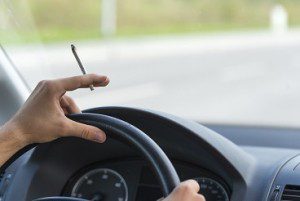 As more states consider legalizing marijuana, legislators are grappling with how to deal with drugged driving. State laws on the issue vary widely, according to Jon Woodruff, Legislative Attorney with the National Alliance for Model State Drug Laws (NAMSDL).
As more states consider legalizing marijuana, legislators are grappling with how to deal with drugged driving. State laws on the issue vary widely, according to Jon Woodruff, Legislative Attorney with the National Alliance for Model State Drug Laws (NAMSDL).
“All states have an ‘under the influence’ law, which generally says a person may not operate a motor vehicle while under the influence of drugs or alcohol,” he said. In 28 states, “under the influence” is the only standard that applies to drugged driving. Twenty-two states, however, have more restrictive provisions that address driving after ingesting certain drugs.
Of these 22 states, 16 states have a “zero tolerance” approach to some drugs, meaning any amount found in a person’s blood or urine is considered illegal. The other six states list concentrations of one or more substances in blood or urine that are considered a violation of the law, regardless of whether the driver is impaired.
Several states, including Michigan and Illinois, make an exception to their “zero tolerance” provision for drivers who have a valid medical marijuana card. However, if they are driving unsafely, they still are subject to the state’s “under the influence” provision.
Drugged driving laws vary even among those states where recreational marijuana has been legalized, Woodruff notes. Alaska, Oregon and Washington, D.C. still have “under the influence” laws, while Washington specifies that it is illegal for a person age 21 or older to drive with 5 or more nanograms of THC (the psychoactive ingredient in marijuana) per milliliter of blood. Any amount of marijuana is illegal for those under 21. Colorado has a similar standard.
Drugged driving appears to be a growing problem, according to a 2015 study by the Governors Highways Safety Association. The study found the percentage of drivers testing positive for marijuana or other illegal drugs is increasing. In 2013 and 2014, 15.1 percent of drivers tested positive for drugs, up from 12.4 percent in 2007.
The group found 38 percent of people who died in auto accidents in 2013 and were tested had detectable levels of potentially impairing drugs – both legal and illegal – in their system. That percentage is almost the same as those testing positive for alcohol.
The most common drugs detected were marijuana (34.7 percent) and amphetamines (9.7 percent), which includes nasal decongestants and drugs to treat attention deficit hyperactivity disorder.
A recent report by the AAA Foundation for Traffic Safety concluded there is no scientific basis for setting numerical limits for marijuana and driving. These limits are arbitrary and unsupported by science, the group says.
The AAA Foundation for Traffic Safety is calling for repeal of state laws that specify concentrations for driving while impaired by marijuana. These laws could result in unsafe drivers going free, while others are wrongfully convicted for impaired driving, the group said.
The foundation is recommending that states replace these laws with measures that would allow specially trained police officers to determine if a driver is impaired. Police could test for the presence of THC, instead of looking for a specific threshold.
According to the report, people with relatively high levels of THC in their systems may not be impaired, especially if they use marijuana regularly. In contrast, some drivers with relatively low THC levels may drive unsafely. This finding is very different from alcohol, where it is known that crash risk increases significantly when a person has higher blood-alcohol concentrations, the foundation notes.
Likely complicating the issue of drugged driving further is a recent Supreme Court decision that said that a suspected drunk driver cannot face criminal penalty for refusing to undergo a warrantless blood alcohol test. While the case involved alcohol, it could have implications for cases involving drugged driving, Woodruff said, as currently there is no breath test for drugged driving.
He added, “It’s a challenge to separate marijuana’s effects on driving from alcohol because so many people use them together.”
Published
July 2016
 Get Support
Get Support
